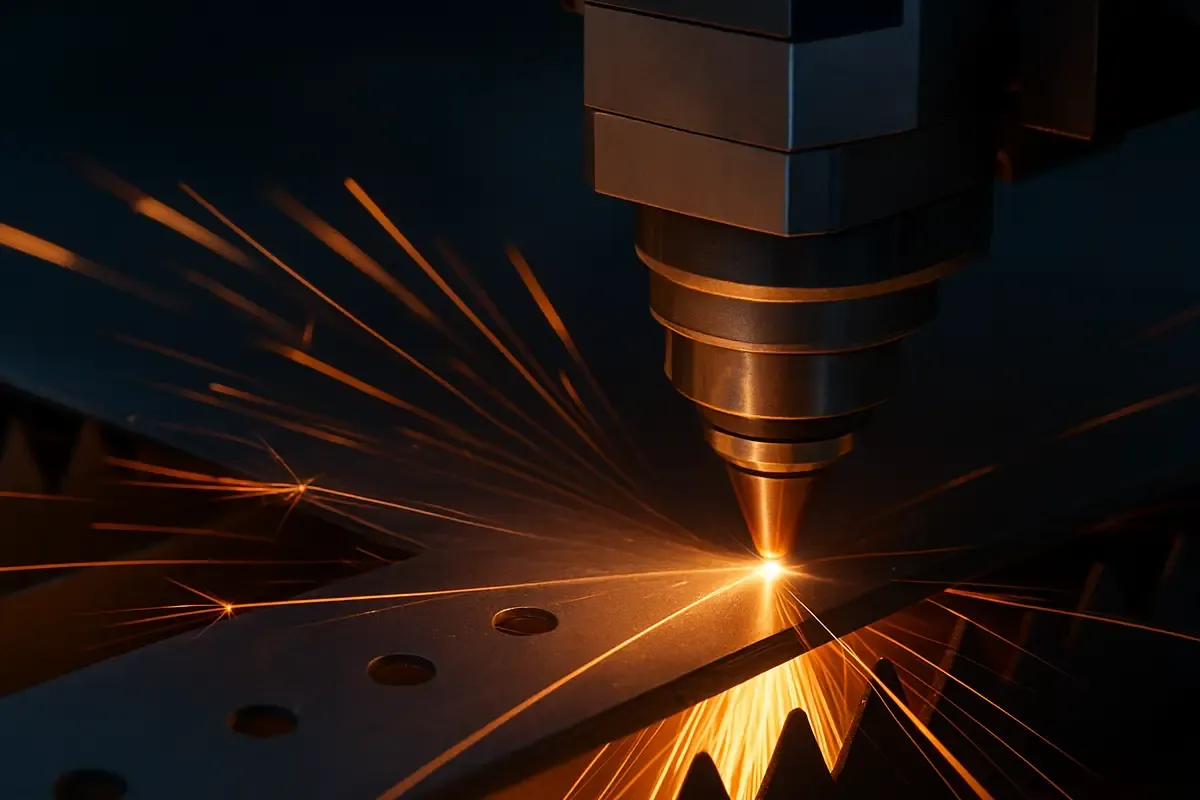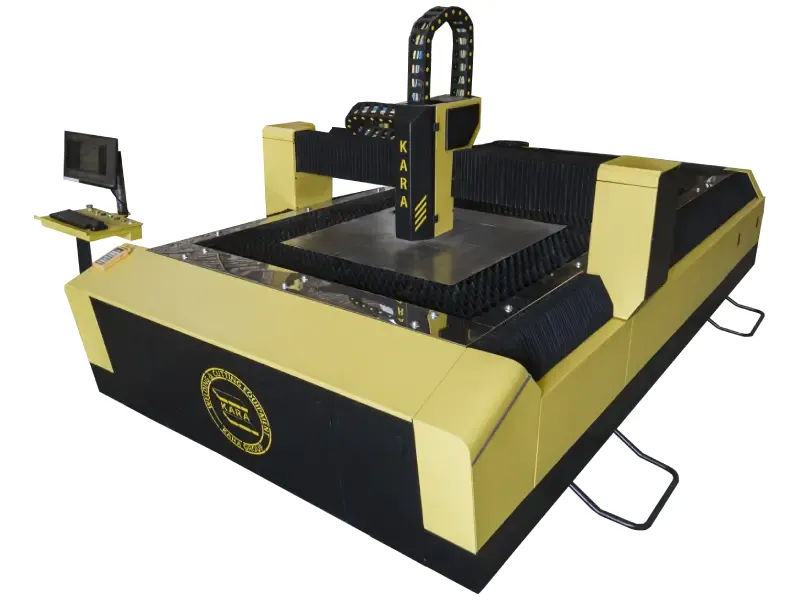
Laser cutting is one of the most accurate methods for shaping metals. A focused laser beam cuts metals with high precision and minimal waste. This technology supports industries like aerospace, automotive, construction, medical, and electronics. These examples illustrate metal laser cutting applications in industry.
It produces complex parts quickly and reliably. The machines require significant investment and careful setup, but the benefits speed, flexibility, and clean results make them essential. Advances in fiber lasers and controls are reducing costs, limiting heat effects, and improving performance. With proper setup, laser cutting transforms how industries manufacture.
Laser cutting directs a concentrated beam to slice metals and other materials. It eliminates the need for mechanical tools. The process delivers fine details with minimal material loss.
The laser melts, burns, or vaporizes material along a path. The result is a smooth, clean cut. This makes it ideal when both looks and accuracy matter.
These strengths explain why metal laser cutting is popular in aerospace, automotive, medical, electronics, and construction.

Selecting the right cutter depends on material type, thickness, accuracy, speed, and budget.
Fiber laser cutting systems are efficient and work well on reflective metals like aluminum. CO₂ lasers handle thick materials and non-metals but struggle with reflective surfaces. Disk and solid-state lasers serve niche needs.
Higher power cuts thicker metals faster. It also increases cost and cooling needs.
Fast cuts save time, but edge finish may suffer without proper calibration.
Reputable brands ensure reliable machines, spare parts, and service important for large-scale use.
Ownership costs include power, cooling, cleaning, maintenance, and training, not just purchase price.
• Laser Source: Generates the beam, defines power and wavelength.
• Optics: Lenses and mirrors guide and focus the beam.
• Frame & Gantry: Keep the system stable and precise.
• Cooling System: Prevents overheating in high-power units.
• Control & Software: CNC software plans paths, optimizes cuts, and manages safety
A CNC-controlled beam moves across the surface, applying heat to melt or vaporize metal. Assist gases such as oxygen, nitrogen, or compressed air clear molten material and improve quality.
Fiber and CO₂ laser cutting machines work at different wavelengths. Fiber lasers are best for reflective surfaces. Beam quality, lens condition, and settings like speed, power, and gas pressure affect results.
Laser cutting offers sharp details, low waste, and fast production. It allows flexible designs without physical tools. Clean edges mean less finishing work.
The machines are costly and need constant care. Reflective metals like copper can damage optics. Thick cuts may cause heat distortion or discoloration. Quality drops beyond a machine’s rated thickness. Accurate setup is essential.
| Advantages | Limitations |
| High precision, complex shapes | High purchase and maintenance costs |
| Low scrap with narrow kerf | Reflective metals may reduce efficiency, damage optics |
| Fast production, quick setup | Heat zones can distort or discolor edges |
| Flexible design without tools | Limited by machine’s max thickness |
| Clean edges, little finishing | Errors in setup reduce cut quality |
Produces light, durable, and complex parts that improve aircraft performance.
Supports mass production of panels, chassis, and precision parts.
Enables decorative façades, railings, and structural plates.
Used for sterile surgical tools and delicate equipment.
Makes thin housings, circuits, and precise components with minimal heat damage
1. What metals can be laser cut?
Steel, stainless steel, aluminum, copper, brass; suitability depends on thickness and laser type.
2. How thick can laser cut metal be?
Depends on power and type; typical industrial machines cut from thin foils up to several centimeters for mild steel.
3. Fiber vs CO₂: which to choose?
Fiber for reflective metals and thin-to-medium thicknesses; CO₂ for very thick materials and some non-metals.
4. What gases are used in laser cutting?
Oxygen (for faster cuts on mild steel), nitrogen (for oxidation-free edges), compressed air (economical).
5. How to improve edge quality?
Optimize power/speed, use correct nozzle and focus, clean optics, and proper assist gas.
6. Is laser cutting safe?
Follow PPE, fume extraction, interlocks, and regular maintenance.